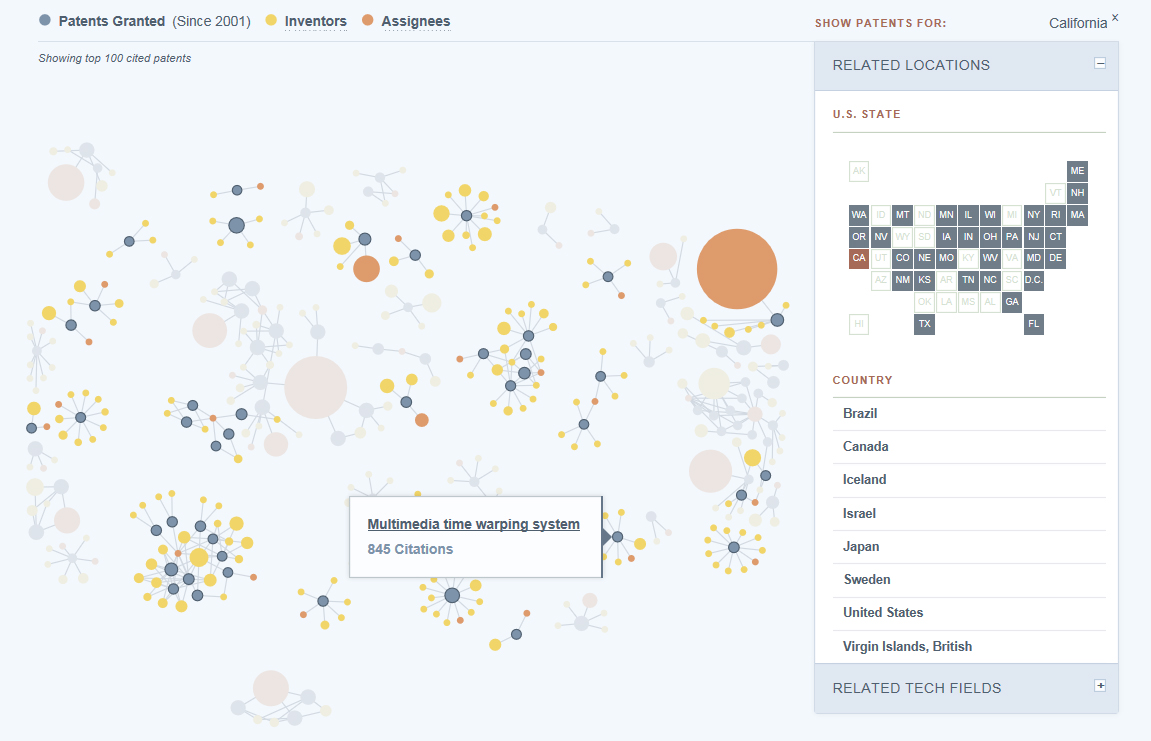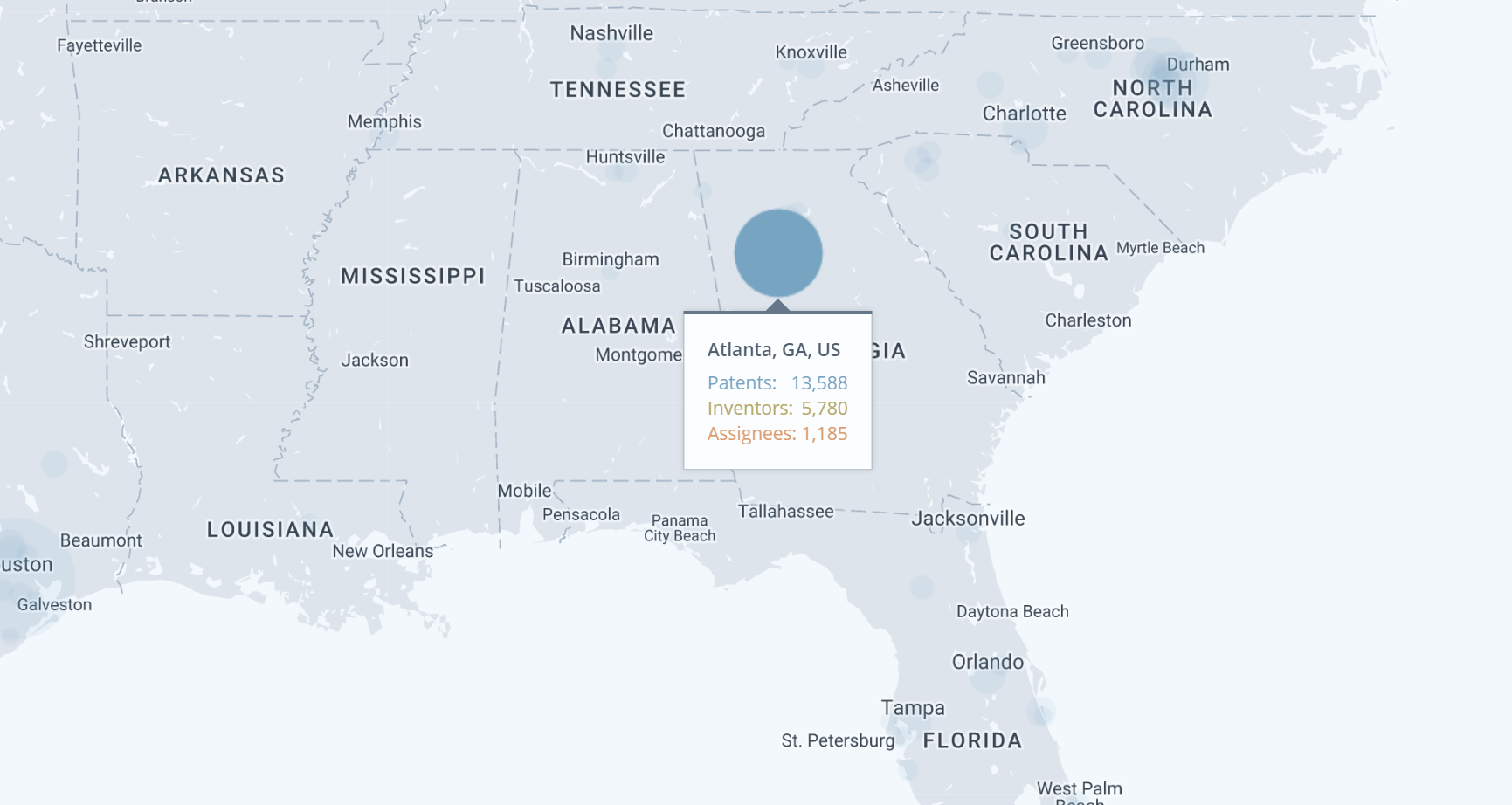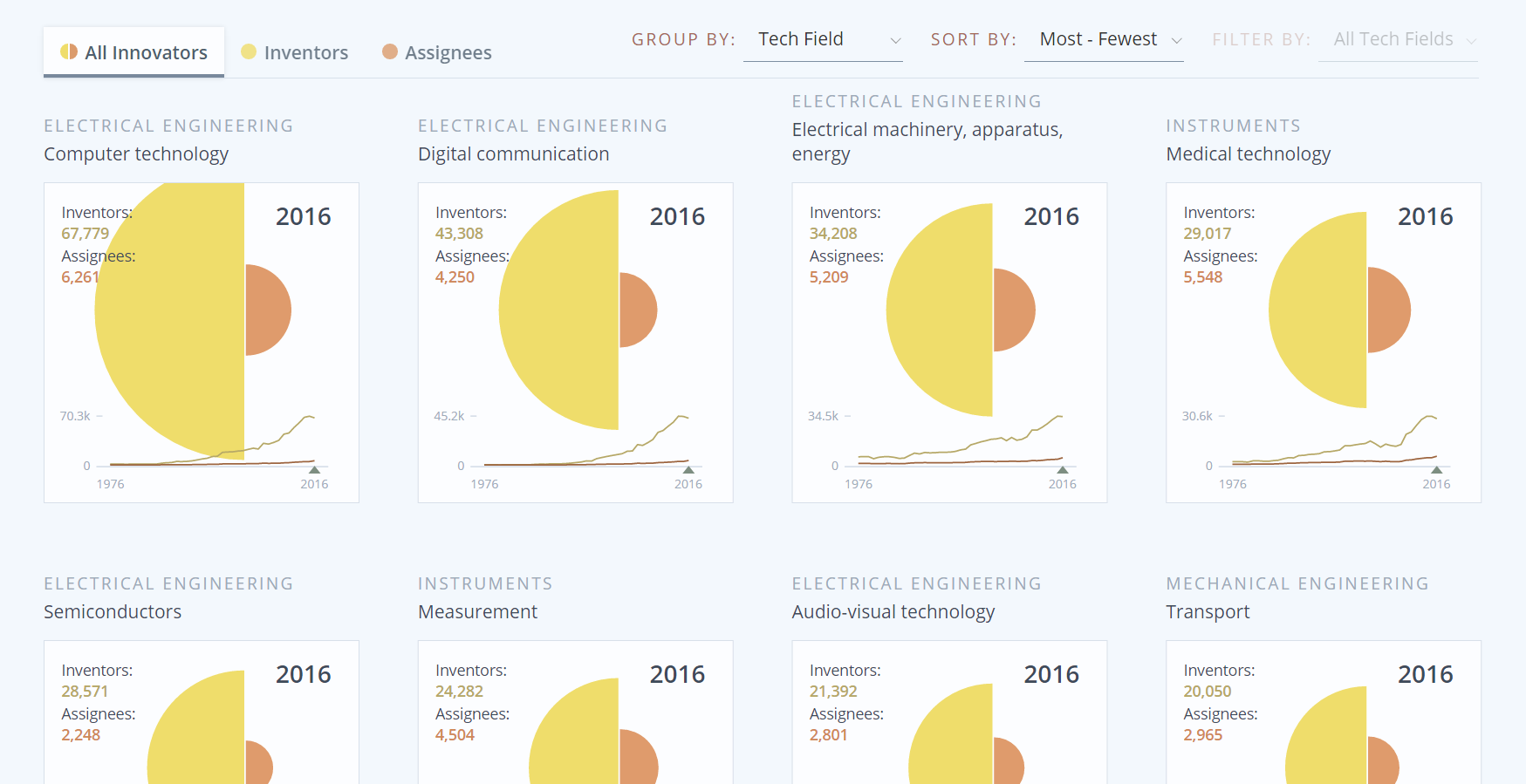More New Ways to Explore Patent Data
Blog by Under Secretary of Commerce for Intellectual Property and Director of the USPTO Michelle K. Lee
Making patent data accessible to the public has been a cornerstone of this agency’s policy since its inception. I’m pleased to announce yet another step we’ve taken at the U.S. Patent and Trademark Office to make such data even easier for the public to understand and use, namely the addition of new features to our patent data visualization and analysis tool, PatentsView. First launched in 2014, PatentsView provides the public a variety of ways to interactively engage, through a web-based platform, the highest-quality patent data available. The underlying database connects 40 years’ worth of information about inventors, their organizations, and their locations in unprecedented ways. PatentsView is a key component of our open data efforts to improve the accessibility, usability, and transparency of U.S. patent data.
PatentsView’s newly revamped interface presents three new user-friendly starting points:
- The Relationship visualization depicts the most cited inventions that propel innovation. Users can explore the network of inventors on these patents and the companies, universities, or other organizations that may employ them and invest in their research. For example, the network visualization shows that Californians invented 44 of the top 100 most cited U.S. patents granted since 2001, including, for example, TiVo’s patent for a multimedia time warping system.

- The Locations visualization displays an interactive worldwide map of the cities where innovation originates. The map highlights regional innovation hubs such as Atlanta, home to more than 5,500 inventors and 1,000 innovating companies since 1976.

- The Comparison visualization depicts patterns in innovation across locations and technologies over time, showing, for example, that over the past two decades there have been more inventors on patents for computer hardware, data processing, and information storage technology than in any other technical field.

From these starting points, users can further explore comprehensive detail views for each patent, inventor, firm, and location. These interactive detail pages emphasize the interconnectedness of inventions, people, and firms. You can also access the data directly through an intuitive search and download system, via an application programming interface (API), or through bulk downloads.
You could argue that the innovations documented in our records may very well, collectively, constitute the world’s largest repository of scientific and technological knowledge. But the larger a data set, the more challenging it is to find useful information or trends or, put another way, to separate the signal from the noise. This collaborative tool, developed by the USPTO’s Office of the Chief Economist in conjunction with the American Institutes for Research, New York University, the University of California at Berkeley, Twin Arch Technologies, and Periscopic, aims to make that sorting and separation possible. The shared public and private effort in creating and improving the platform is symbolized in the “.org” domain of http://www.PatentsView.org.
By providing new tools and data to the public, PatentsView demonstrates this agency’s continuing commitment to open data, open government, and evidence-based policymaking.
Posted at 05:51AM Jan 12, 2017 in patents | Comments[1]


Posted by Amnon M Cohen on January 12, 2017 at 10:32 PM EST #